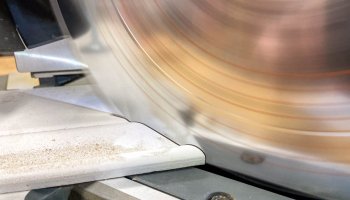
Does reciprocating saw orbital action really make that much difference? That’s the question we tackle in this edition of PTR Head 2 Head. We want to know if the orbital action really cuts all that much faster in wood. To test this, we’ll use our Bosch recipe saw to cut through a pressure-treated piece of 2×12 and some 16d nails using a Diablo carbide-tipped reciprocating saw blade.
If you’re relatively new to reciprocating saws (or Sawzalls as Pros tend to call them after Milwaukee’s invention more than 50 years ago), orbital action is a benefit for cutting in wood. It creates a more elliptical cutting motion. This aggressive cutting style allows you to remove wood at a faster rate—or so the manufacturers’ claims go. We decided to see if we could use technique alone to overcome the purported advantages of orbital action.
Reciprocating Saw Orbital Action Claims
- elliptical motion removes material faster than straight back and forth sawing
- more aggressive cut delivers more vibration and is not appropriate for metal cutting
The Dual-Action 18V Reciprocating Saw
Bosch GSA 18V-125 Reciprocating Saw
The Reciprocating Saw Blade
Diablo Demo Demon Wood Blade with Carbide Teeth
Lastly, we’ll be cutting into 2 x 12 pressure-treated (PT) pine with five 16D nails embedded within.








